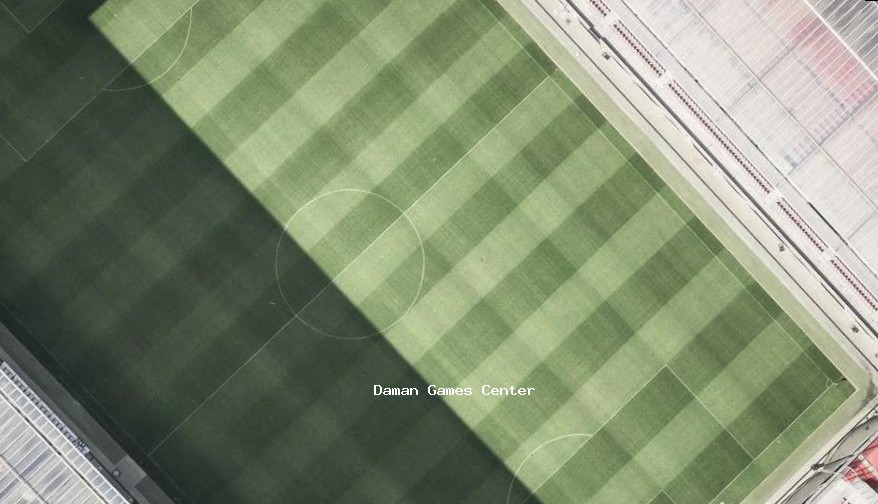Kabbadi: India's Traditional Sport
A dynamic contact sport that combines strength, strategy, and speed, deeply rooted in Indian culture.

What is Kabbadi?
Kabbadi is a traditional contact sport that originated in ancient India. It is a game that requires no equipment, making it accessible to people of all backgrounds across the country.
The game is played between two teams, each consisting of seven players. The objective of Kabbadi is for a single player, known as a "raider," to enter the opposing team's half, tag as many defenders as possible, and return to their own half without being caught.
What makes Kabbadi unique is the raider must continuously chant "kabbadi, kabbadi" while in the opponent's half, without taking a breath. This adds an intense physical and mental challenge to the sport.

Kabbadi is more than just a sport in India; it's a cultural phenomenon. It's played in villages, towns, and cities across the country, from casual games in local fields to professional leagues with millions of viewers.
The simplicity of Kabbadi's rules combined with its high-intensity gameplay has made it popular not just in India but also in neighboring countries like Pakistan, Bangladesh, and Sri Lanka. In recent years, it has even gained international recognition, with tournaments held around the world.
History of Kabbadi
The origins of Kabbadi can be traced back thousands of years in India. References to games similar to Kabbadi can be found in ancient texts and scriptures, indicating that the sport has deep roots in Indian history and culture.
Some historians believe that Kabbadi evolved from a form of military training. Ancient warriors used similar techniques to sneak into enemy camps, gather information, and return safely—much like the raider in modern Kabbadi.

Over the centuries, Kabbadi transitioned from a training exercise to a popular recreational activity. It was played in villages during festivals and special occasions, bringing communities together.
The first formal rules for Kabbadi were established in the early 20th century. In 1923, the first official Kabbadi tournament was organized in Tamil Nadu. Since then, the sport has grown in popularity and structure.
Kabbadi was included as a demonstration sport in the 1936 Berlin Olympics, introducing it to an international audience. However, it wasn't until 1990 that Kabbadi became an official sport in the Asian Games.
India has been a dominant force in international Kabbadi competitions, winning most of the major tournaments. This success has helped raise the profile of Kabbadi both within India and globally.
In recent years, the formation of professional leagues like the Pro Kabbadi League (PKL) has revolutionized the sport, bringing it to television screens across India and attracting huge audiences and investments.
Rules of Kabbadi
Kabbadi has a set of specific rules that govern gameplay. While there may be slight variations in different regions or leagues, these are the fundamental rules of the sport:
Basic Game Structure ⚙️
- Matches are played on a rectangular court, divided into two halves
- Each team has 7 players on the court, with up to 5 substitutes
- A standard match consists of two halves, each lasting 20 minutes, with a 5-minute break in between
- Teams take turns sending raiders into the opponent's half
Raiding Rules 🕵️
- A raider must cross the midline to enter the opponent's half
- Once in the opponent's half, the raider must continuously chant "kabbadi"
- The raider attempts to tag as many defenders as possible
- To score points, the raider must return to their own half without being tackled

Defending Rules 🛡️
- Defenders must prevent the raider from returning to their half
- Defenders can tackle the raider, but must not hold the raider's hair or clothes
- All parts of the raider's body must be held to constitute a valid tackle
- Defenders score points if they successfully tackle a raider
Scoring System 🏆
- 1 point for each defender tagged by a successful raider
- 2 points for a "super raid" (tagging 3 or more defenders)
- 1 point for each defender who successfully tackles a raider
- 2 points for a "super tackle" (tackling a raider with 3 or fewer defenders)
- Bonus points if a team gets all 7 opponents out ("lona")
These rules ensure that Kabbadi remains a fair, exciting, and challenging sport. Referees closely monitor the game to ensure all rules are followed, and they have the authority to issue warnings or penalties for rule violations.
Understanding these rules is essential for anyone looking to play or follow Kabbadi, as they form the foundation of this thrilling sport.
Popularity of Kabbadi in India
Kabbadi holds a special place in the hearts of Indians. It is one of the most popular sports in the country, with a following that spans all ages, genders, and social classes.
In rural areas, Kabbadi is often played in open fields during festivals and community gatherings. These informal matches bring villages together and are a source of great pride for the participants and spectators alike.

Professional Leagues 🎉
The launch of the Pro Kabbadi League (PKL) in 2014 revolutionized the sport in India. The league brought professional standards, high production values, and star players to the forefront, transforming Kabbadi into a major spectator sport.
PKL matches are broadcast on national television and attract millions of viewers. The league has 12 teams representing different cities across India, creating intense rivalries and local pride.
The success of PKL has led to increased investment in Kabbadi infrastructure, training facilities, and player development programs across the country.
Download Statistics 📱
The popularity of Kabbadi has translated into significant digital presence. Kabbadi-related mobile apps have seen tremendous growth in recent years:
-
Total downloads of Kabbadi apps in India: Over 50 million
-
Average user rating for top Kabbadi apps: 4.5/5
-
Monthly active users: Approximately 15 million
-
Average daily usage: 35 minutes per user
These numbers reflect the growing digital engagement with Kabbadi, as fans use apps to follow their favorite teams, watch matches, and even play virtual versions of the sport.
Download the Top Kabbadi App NowPlayer Reviews and Feedback 💬
Kabbadi players, both amateur and professional, have expressed their passion for the sport. Here's what some of them have to say:

Ramesh Patel
"Kabbadi taught me discipline and teamwork. It's more than a sport; it's a way of life. The energy during a match is unmatched!"

Priya Sharma
"As a female player, Kabbadi has given me confidence and strength. The sport is growing for women in India, and it's inspiring to see more girls participating."

Arjun Singh
"Playing professionally has changed my life. The Pro Kabbadi League has given us players recognition and opportunities we never had before."
Localized Versions and Variations 🌍
While the basic rules of Kabbadi remain consistent, there are several regional variations of the sport across India, each with its own unique characteristics:
- Tamil Nadu: Known as "Sadugudu," this version allows unlimited substitutions and has slightly different tackling rules.
- Punjab: "Kabaddi" here is played on a larger field and often features longer raiding times.
- Maharashtra: "Hu-Tu-Tu" is a popular variation with different scoring rules, particularly for tackles.
- Bengal: "Ha-Du-Du" is played with fewer players and has a shorter match duration.
These regional variations highlight how Kabbadi has been adopted and adapted by different cultures within India, making it a truly national sport that reflects the country's diversity.
Kabbadi Strategies and Gameplay
Kabbadi is often described as a combination of chess and wrestling, requiring both physical prowess and strategic thinking. Successful teams master various strategies to outwit their opponents.

Raiding Strategies 🚀
Effective raiding is crucial for scoring points in Kabbadi. Here are some common raiding strategies used by top players:
The Touch Raid
A quick raid where the raider targets a single defender, touches them lightly, and immediately turns back to their half. This strategy minimizes the risk of being tackled.
The Dubki
A spectacular move where the raider dives low under the defenders' arms to tag them, then quickly rolls back to safety. This requires great flexibility and timing.
The Running Hand Touch
The raider runs along the baulk line, extending their hand to tag multiple defenders in a single raid. This strategy is effective against spread-out defenses.
The Fake Raid
A psychological tactic where the raider pretends to target one area, drawing defenders out of position, then quickly changes direction to tag unsuspecting defenders.
Defending Strategies 🛡️
A strong defense can turn the tide of a Kabbadi match. Here are some key defensive strategies:
The Chain Defense
Defenders link arms to form a human chain across the court, making it difficult for the raider to find gaps to escape.
The Corner Trap
Defenders lure the raider toward the corner of the court, then converge to trap them with a coordinated tackle.
The Single Leg Tackle
A defender grabs one of the raider's legs, lifting it off the ground to prevent movement, while teammates move in to complete the tackle.
The Shoulder Push
Timing a shoulder push to disrupt the raider's balance as they attempt to cross back to their half, making them vulnerable to a tackle.
Indian Player Tips and攻略 (Gonglue) 💡
Indian Kabbadi players, with generations of experience, have developed valuable insights and tips for mastering the sport:
Fitness Tips from Indian Pros
- Breath Control: Practice long, steady breathing to maintain the "kabbadi" chant during raids. Many players use pranayama techniques from yoga.
- Explosive Speed: Train with short sprints and agility drills to develop quick bursts of speed needed for successful raids.
- Core Strength: A strong core is essential for both raiding moves like the dubki and for maintaining balance during tackles.
- Team Coordination: Practice set plays with your team to develop默契 (mòqì - understanding) and coordination during matches.
Local Tournaments and Events 🎪
India hosts numerous Kabbadi tournaments throughout the year, from local village competitions to national championships:
Rural Kabbadi Melas
These village festivals often feature Kabbadi tournaments as their main attraction. They draw large crowds and often include cultural performances alongside the matches.
State Championships
Each Indian state organizes its own Kabbadi championship, with teams representing districts. These tournaments serve as talent scouts for national teams.
National Games
Kabbadi is a major event in India's National Games, with intense competition between states. These games receive significant media coverage.
Community and Fan Culture 🎉
Kabbadi has a vibrant community and fan culture in India. Here's how fans engage with the sport:
- Local Discussion Groups: In villages and towns, men often gather at tea stalls to discuss recent matches and analyze player performances.
- Team Support: Fans show their support by painting their faces, wearing team colors, and creating elaborate banners for matches.
- Social Media Communities: Online groups with thousands of members discuss strategies, share highlights, and organize watch parties for major matches.
- Fantasy Kabbadi Leagues: These online platforms allow fans to create virtual teams and compete based on real players' performances, increasing engagement.
This strong community engagement is what makes Kabbadi more than just a sport in India—it's a social phenomenon that brings people together.
The Future of Kabbadi
Kabbadi's future in India and around the world looks bright. The sport has seen tremendous growth in recent years, and this trend is expected to continue.
With increased investment, better infrastructure, and growing media coverage, Kabbadi is poised to become one of India's most popular sports on the global stage.

The Pro Kabbadi League has played a significant role in popularizing the sport among younger generations. Many schools and colleges now have Kabbadi teams and organize regular competitions.
There is also a growing focus on developing women's Kabbadi in India. Women's leagues are gaining popularity, providing female athletes with more opportunities to compete at a professional level.
As Kabbadi continues to evolve, it remains true to its roots—a sport that celebrates strength, agility, and teamwork, while bringing communities together in the spirit of healthy competition.